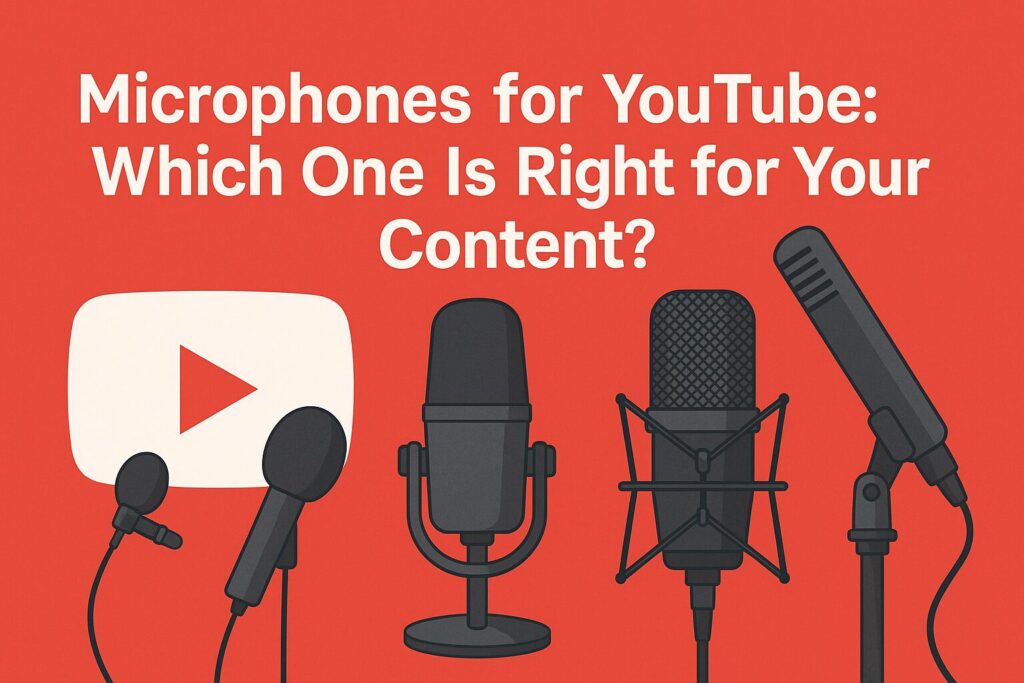A Deep Dive Into Camera Choices: Finding The Best One For Your YouTube Channel
Whether you’re planning your first YouTube upload or revamping your setup to improve video quality, choosing the right camera can feel overwhelming. With hundreds of models out there, a wide price range, and a laundry list of specs to compare, it’s easy to get lost in the tech jungle.
But don’t worry—you don’t need a Hollywood budget or a degree in cinematography to figure it out.
In this guide, we’ll walk through the different types of cameras, highlight the best options for various content styles and budgets, and explore real-world advice from successful YouTubers. We’ll also break down the most important features you should care about—and the ones you can skip.
Let’s dive into the world of YouTube camera gear and help you find the perfect match for your channel’s needs.
🎥 Why Camera Choice Matters for YouTubers
Let’s be honest—first impressions do matter on YouTube. If your video looks blurry, shaky, or your audio is muffled, viewers might click away before they hear your message.
A solid camera doesn’t just make you look more professional—it makes you feel more confident, and that confidence shows up on screen.
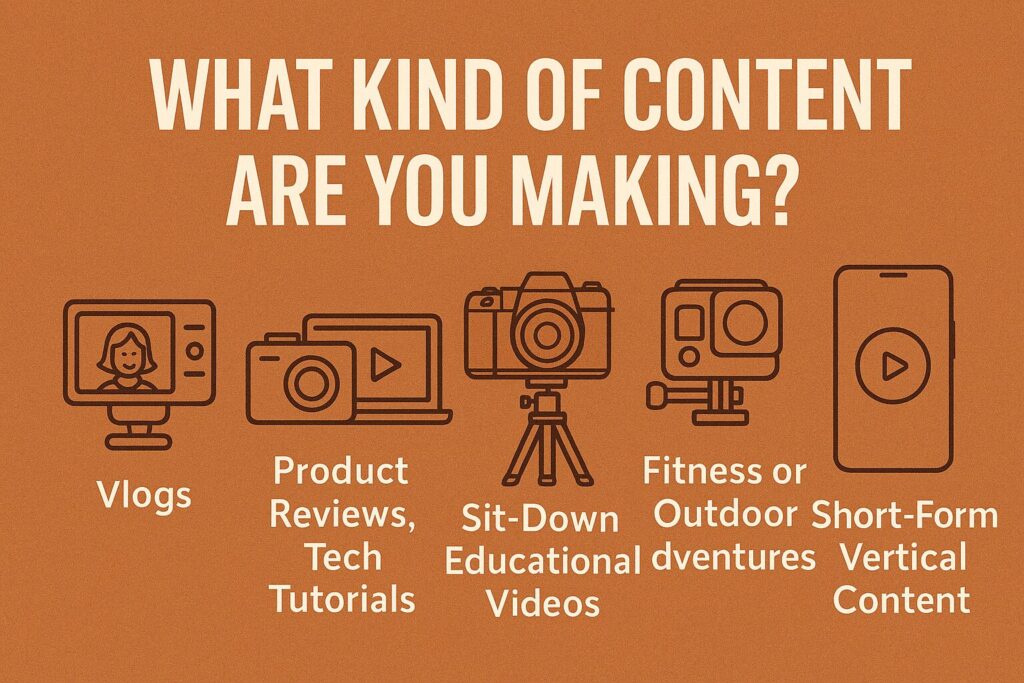
But what’s the right one? Ask yourself:
- What type of content do I plan to create?
- Will I be filming indoors, outdoors, or both?
- Do I need something portable?
- What’s my budget?
- Do I need 4K, or is HD enough?
- Will I record solo or with help?
The answers to these questions are the foundation for finding your ideal camera.
📷 Types of Cameras for YouTube Content Creation
1. Smartphones – Best for Beginners and On-the-Go Filming
Ideal for: Vlogging, lifestyle videos, spontaneous content, shorts
Modern smartphones are surprisingly powerful. With features like 4K recording, built-in stabilization, and cinematic modes, many creators are using phones as their primary video tool.
Pros:
- Always available
- Great for mobility and quick filming
- Impressive video capabilities in newer models (iPhone 15, Samsung S24)
Cons:
- Limited manual settings
- Audio quality often needs improvement
- Hard to achieve shallow depth of field (that blurred background look)
Suggested Accessory: Pair with a gimbal and a lavalier mic to boost stability and sound.
2. Compact Cameras – Best for Simplicity and Travel
Ideal for: Vloggers, travelers, lifestyle creators
Compact or “point-and-shoot” cameras like the Sony ZV-1 are made with YouTubers in mind. They’re easy to carry, user-friendly, and shoot high-quality footage with minimal setup.
Pros:
- Lightweight and pocketable
- Designed for solo creators
- Excellent autofocus and color science
Cons:
- Limited zoom capabilities
- Not as customizable as DSLRs or mirrorless cameras
Popular Pick: Sony ZV-1 – Built-in ND filter, flip screen, great autofocus, and solid internal mics.
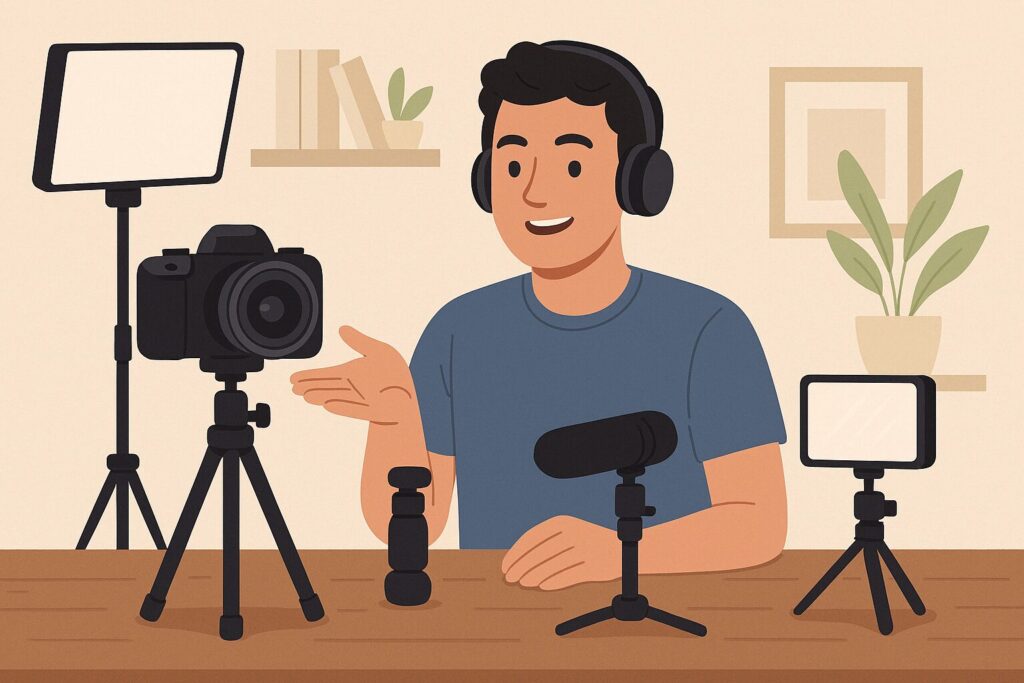
3. DSLR Cameras – Best for Traditional Content Creators
Ideal for: Tutorials, interviews, studio setups, educational content
DSLRs like the Canon EOS 90D are popular among YouTubers who want pro-quality footage and interchangeable lenses.
Pros:
- Large sensors = better low-light performance
- Interchangeable lenses for creative control
- Great depth of field for that “cinematic” look
Cons:
- Bulky and heavy
- Not always optimized for video (older models)
- May require external mic and lighting
Best DSLR for YouTube Beginners: Canon EOS Rebel T8i
4. Mirrorless Cameras – Best Balance of Quality and Portability
Ideal for: All-purpose creators, vloggers, filmmakers, tutorials
Mirrorless cameras are lighter than DSLRs but deliver similar—or even better—quality. They’re now a top choice for content creators who want high performance without the bulk.
Pros:
- Excellent video quality (often with 4K or better)
- Faster autofocus
- Compact designs
Cons:
- Can be pricey
- May require external accessories
Top Pick: Sony ZV-E10 – Swappable lenses, 4K video, microphone input, beginner-friendly.
🎯 Key Camera Features You Should Look For
📌 1. Resolution & Frame Rate
- 1080p (Full HD) is great for most creators.
- 4K offers more detail and future-proofing.
- Look for at least 30fps (frames per second), but 60fps is smoother.
📌 2. Autofocus
If you’re filming yourself, fast and accurate autofocus is essential. Look for:
- Eye-detection AF
- Face-tracking
📌 3. Stabilization
Built-in image stabilization helps reduce shaky footage—especially helpful for vloggers or action content creators.
📌 4. Flip Screen
A fully articulating screen lets you see yourself while filming—a must-have for solo creators.
📌 5. External Mic Support
Audio is just as important as video. External mic input lets you improve your sound with lav mics, shotgun mics, or wireless systems.
📌 6. Battery Life & Overheating
If you plan on shooting long-form content, make sure the camera doesn’t overheat and that battery life is reliable.
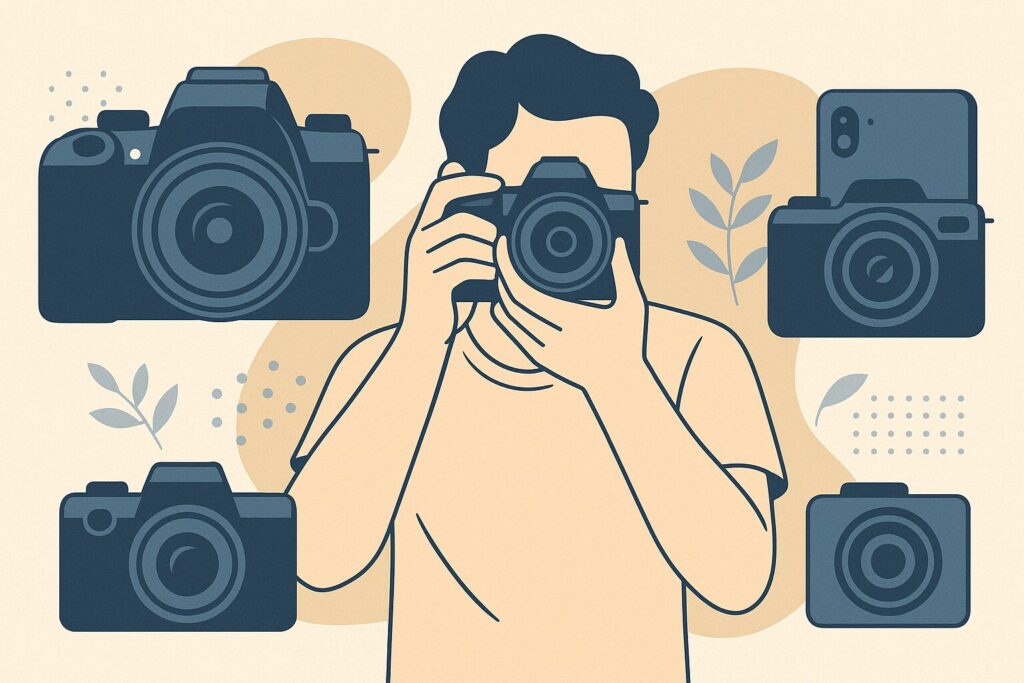
💰 Choosing the Right Camera for Your Budget
Here’s the truth: you don’t need to spend thousands to get started. Some of the most successful YouTubers began with mid-range or even entry-level cameras.
If you’re working with under $500, consider the Canon Vixia HF R800 (great for beginners who want a camcorder) or stick with your smartphone and invest in audio gear.
For budgets between $500 and $800, look at cameras like the Canon EOS M50 Mark II, Sony ZV-1, or Panasonic Lumix G85. They offer professional-level quality without breaking the bank.
If your budget is $1,000 or higher, you’ll unlock options like the Sony A6400, Panasonic GH5, or the Canon EOS R50. These are powerhouse cameras that can grow with your channel for years.
But remember: a great video with decent gear beats a boring video with expensive gear every time.
🔊 Don’t Sleep on Audio: Camera Isn’t Everything
You could have the best visuals in the world—but if your audio sounds like you’re underwater in a wind tunnel, viewers will click away fast.
Pro Tip: Pair your camera with a quality microphone. Options include:
- Shotgun Mic: Rode VideoMic Pro (great for directional sound)
- Lavalier Mic: BOYA BY-M1 or Rode Wireless GO (great for interviews or movement)
- USB Mic: Blue Yeti or Shure MV7 for desktop voiceovers or podcasting
Also, consider soundproofing your space or adding foam panels to reduce echo.
📦 Accessories That Will Elevate Your Setup
Even with the best camera, you’ll need the right tools to get the most out of it:
- Tripod – For steady, professional-looking shots
- Lighting Kit – A ring light or softbox can work wonders
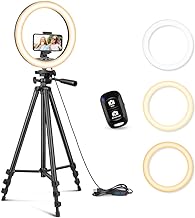
Tripod Stand
- Extra Batteries – Avoid power cutoffs mid-recording
- SD Cards – Fast, high-capacity cards prevent lag and corruption
- Gimbals – For silky smooth motion shots on the go
🎬 Real-World Examples: What Do Top YouTubers Use?
- Marques Brownlee (Tech) – Shoots with RED cameras and Sony FX3, but started with a Canon T2i.
- Emma Chamberlain (Vlog) – Known to use compact cameras and sometimes iPhones.
- Peter McKinnon (Filmmaking) – Uses Canon R5 and pro lenses but recommends the Canon M50 for starters.
- Ali Abdaal (Education/Tech) – Started with Canon 70D, later moved to Sony A7C.
The takeaway? Most big creators didn’t start with fancy gear. They grew into it.
How to Choose the Best Camera for Your YouTube Style
Let’s break it down by content type:
- Vloggers: Go for a lightweight setup with stabilization and a flip screen. The Sony ZV-1 or Canon G7X Mark III are excellent picks.
- Tutorial Creators: Look for cameras with clean HDMI output and sharp 1080p or 4K. The Sony ZV-E10 or Canon M50 Mark II work well here.
- Gaming YouTubers: A high-quality webcam like the Elgato Facecam or Logitech Brio is perfect when combined with screen capture software.
- Product Reviewers or Unboxers: You’ll want sharp focus and high detail. Consider mirrorless models like the Sony A6400 or Panasonic G85.
- Filmmaking on a Budget: The Blackmagic Pocket Cinema 4K or the Panasonic GH5 give you film-level control and stunning visuals—without the Hollywood price tag.
💡 Final Thoughts: Build What Works for You
Finding the right camera doesn’t mean getting the most expensive one on the market—it means getting the one that fits your workflow, content style, and budget right now.
👉 Start where you are. 👉 Grow as your channel grows. 👉 Learn the basics—like lighting, sound, and framing—before spending thousands.
Remember: A great video comes from you, not just your camera.
Call to Action: Have a favorite camera or gear setup you love? Share your go-to tools in the comments—or tag your YouTube channel so we can check out your content! And if you’re still unsure what to buy, feel free to ask for personalized recommendations—we’ve got your back.

Larry Mac
Hi there, and thanks for stopping by! My name is Larry, and I’m the voice behind 6fig.com. I search the Internet to try and find Money making opportunities to share.. Thanks for stopping by, feel free to subscribe and comment. Thank You!
You Got This, I Learned these skills and More at Wealthy Affiliate. Hey if this 65 year old Grandfather can make money online, you can too!
This website got me on the path to making money online! Click Here to Start!

